The Civil War Blu-ray Movie
HomeThe Civil War Blu-ray Movie 
25th Anniversary Edition - Recalled EditionPBS | 1990 | 694 min | Rated TV-PG | Oct 13, 2015
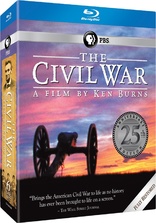
Movie rating
8.7 | / 10 |
Blu-ray rating
| Users | 2.0 | |
| Reviewer | 4.5 | |
| Overall | 4.5 |
Overview
The Civil War (1990)
Ken Burn's epic documentary brings to life America's most destructive - and defining - conflict. Here is the saga of celebrated generals and ordinary soldiers, a heroic and transcendent president and a country that had to divide itself in two in order to become one.
Starring: Sam Waterston, Julie Harris, Jason Robards, Morgan Freeman, Paul RoeblingNarrator: David McCullough
Director: Ken Burns
| History | Uncertain |
| Documentary | Uncertain |
| War | Uncertain |
Specifications
Video
Video codec: MPEG-4 AVC
Video resolution: 1080p
Aspect ratio: 1.43:1
Original aspect ratio: 1.33:1
Audio
English: DTS-HD Master Audio 5.1 (48kHz, 16-bit)
English: DTS-HD Master Audio 2.0 (48kHz, 16-bit)
Subtitles
English SDH
Discs
50GB Blu-ray Disc
Six-disc set (6 BDs)
Packaging
Slipcover in original pressing
Playback
Region A (locked)
Review
Rating summary
| Movie | 5.0 | |
| Video | 4.0 | |
| Audio | 5.0 | |
| Extras | 5.0 | |
| Overall | 4.5 |
The Civil War Blu-ray Movie Review
Reviewed by Brian Orndorf October 10, 2015Ken Burns was a respected documentarian before he tackled “The Civil War,” but when the nine-episode program hit PBS in 1990, it turned him into the only documentarian. While numerous film and television projects have attempted to explore pieces of the Civil War, few have ever tried to wrap their arms around the entire event, leaving such painstaking research and psychological dissection to behemoth literary endeavors. Against all odds, Burns reaches for the brass ring with “The Civil War,” embarking on a massive informational and emotional journey of history and intimacy, trying to discover the true face of a nation divided by bitter conflict and soaked in blood. Perhaps it goes without noting that Burns’s achievement is landmark television, spawning countless imitators. What’s actually true about the show is how efficient and smartly designed it truly is, making the enormity of the War Between the States feel approachable and, at times, achingly human. It’s a remarkable directorial accomplishment.
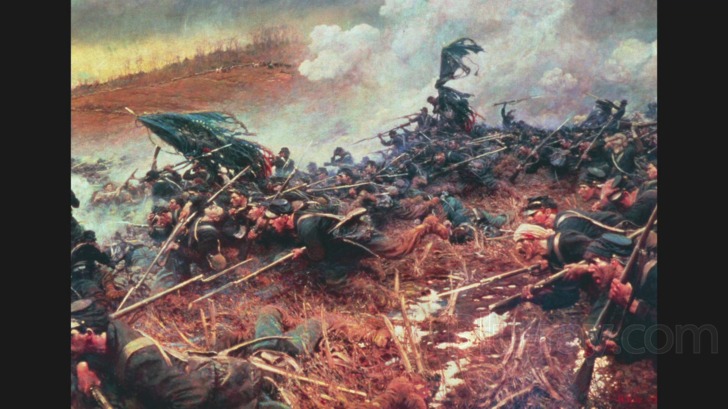
Instead of becoming just another lukewarm history lesson featuring a line-up of talking heads, Burns pulls off complete era immersion. Assembling all available visual evidence, the production builds an approach that’s largely reliant on paintings and photographs, offering an authentic look at the conditions of soldiers and battlegrounds during the downward spiral of conflict. While technical limitations are expected, clarity is startling on most of the pictures, identifying weary participants and determined leaders entering the unknown of war. Burns adds contemporary footage of battle sites and buildings to help put the enormity of the conflict in focus, with many locations still displaying decoration and weaponry from the war.
It’s a meditative helming job, with Burns using magic hour shots and autumnal vistas to set the mood, breaking up the sprint of history with cinematographic beauty. A few interviewees are invited to the party, including historians Barbara Fields and Ed Bearss (whose theatrical mannerisms and trained voice is truly something to experience), but the star of the show is author Shelby Foote, who’s knowledge of the Civil War and Southern charms combine to provide the show with an old friend to return to, adding some needed shots of humor to the proceedings. The production returns to Foote repeatedly, giving him space to tell stories and fill in gaps between large battles, identifying the mood of the men and hesitation of politicians. For marquee value, “The Civil War” brings in a host of celebrities to voice inner-thoughts and read letters, with Morgan Freeman, Garrison Keillor, Julie Harris, and Jason Robards just a few of the cast members bringing life to the written word.
“The Civil War” opens the expanse of the conflict for the average viewer, but Burns doesn’t play the series as “History for Dummies.” Instead of underlining important stops along the way, the production slowly takes in every development, tracking the divide of the nation and the hardening personalities of the military personnel. There’s a significant study of leaders and followers, while the passage of time is handled carefully, identifying shifts in power as North and South battled back and forth for four long years. Intimacy is perhaps the most important element of “The Civil War,” with Burns and his team burrowing into conflicted headspaces, understanding the complexity of thought that emerged from the average soldier and the leader of the nation, as Abraham Lincoln is revealed to be conflicted president, making critical mistakes along the way. Burns prizes humanity, and honesty is the key to “The Civil War,” which does away with the romance of nostalgia to understand exactly what it was like to be in the thick of battle and feel the cruelty of isolation.
Episodes
Disc 1
“The Cause” (100:58)
A concern sweeps across America pertaining to the rights of slavery, with the country finding its interest in forced labor growing in the south due to innovations in the cotton industry. As tensions mount, abolitionist John Brown attempts a raid on slavery supporters in Kansas. His defeat triggers plans for national change. As “secessionitis” spreads across America, plans are made for the South to create its own government, appointing Jefferson Davis as its president. Also rising to power is Abraham Lincoln, who becomes the President of the United States in 1861, put in charge of a troubled nation. On April 12th, 1861, the attack at Fort Sumter by Confederate forces begins the Civil War. While the national conflict was expected to be resolved in mere months, its scope developed rapidly, leading to a surprise Union loss at the First Battle of Bull Run.
Disc 2
“A Very Bloody Affair” (69:45)
With the Civil War still in its infancy, Lincoln begins to build his cabinet, but his attention is consistently drawn to General George McClellan, the leader of the Union Army and a man who refuses to follow orders, playing it safe as conflict slows to a crawl. The war takes to water with the construction of Ironclads, showcasing innovation and sheer firepower. Tales of the average men who made up the Confederate Army are shared, identifying loneliness and mounting frustrations as enlistment periods are lengthened for the poor. The Battle of Shiloh proves to be the first of many massacres during the war years, with Union and Confederate sides losing over 3,000 men during a single event. And black abolitionist Frederick Douglass fights to define the Civil War as a battle over slavery, finding Lincoln resistant to the label as he works to protect the Union.
“Forever Free” (77:33)
Playing an important part in the record of the war, photographers enter the ranks of both armies, documenting soldiers and battlefields, capturing what they can with cumbersome equipment. The fury of General “Stonewall” Jackson is felt across the land, with his unflinching attitude toward death driving the Confederacy to deadlier conflicts. Realizing the need of motivation to drive Union forces, Lincoln remains hesitant to embark on a future of emancipation, looking to send blacks to a special colony on another continent. However, clarity prevails, and the Emancipation Proclamation is born in 1863, freeing slaves, with some forming special divisions of the Union Army. And the Battle of Antietam is explored throughout its many stages and mass casualties.
Disc 3
“Simply Murder” (63:32)
As the Civil War rages on, illness and hunger begin taking a toll on the soldiers, leading to mass desertion and general discontent with service. Imagination blooms with rations, which are often turned into specialty items to help with morale. And battles at Fredericksburg and Chancellorsville are inspected, discovering how these Union defeats changed the tide of the war and solidified the reputation of General Robert E. Lee.
“The Universe of Battle” (97:04)
General Lee, emboldened by recent Confederate victories, begins to push his way into northern territory. This invasion would peak with the Battle of Gettysburg, a three-day bloodbath that resulted in the largest amount of casualties during the war, shifting the momentum of combat back to the Union. Female presence during the Civil War is explored, identifying quality of medical care and influx of supplies once women began to take command of their duties. And the Siege of Vicksburg carried on for 48 days, testing the survival skills of the Southern city as warfare lasted for what seemed like an eternity.
Disc 4
“Valley of the Shadow of Death” (71:01)
Emerging as leaders to be reckoned with, the lives of General Ulysses S. Grant and General Lee are investigated, with the men eventually facing each other on the battlefield. It’s during one of these conflicts where Grant encounters the Battle of the Wilderness, finding warfare in Spotsylvania especially damaging to Union Army numbers. While poet Walt Whitman becomes a nurse, sharing his words with the wounded, it’s Dorothea Dix who develops a standard of care that preserves health and sanity. And Lincoln faces the challenge of reelection, counting on the General William Tecumseh Sherman’s ambition to take Georgia to help inspire Union pride.
“Most Hallowed Ground” (73:31)
The history of Lieutenant General Nathan Bedford Forrest is shared, identifying the leader as a key member of the Confederacy during its downfall. As election time draws near, Lincoln is doubtful of victory, finding competition from McClelland, with his anti-war stance making him an enticing option for a fatigued nation. The life and times of spies and their networks are investigated, and the horrors of the Anderson POW camp are shared. And as the dead rise in record numbers, the land soon becomes lined with headstones, with the Arlington National Cemetery in Virginia established as a significant place of burial for military personnel.
Disc 5
“War is Hell” (70:22)
Tearing through Georgia with a special fury, General Sherman clears out the Confederate Army, leaving behind the citizens of the state, who deal with famine and despair now that order has ended. The 13th Amendment is ratified in 1865, abolishing slavery across the land, adding more motivation for the impending Union victory. In Appomattox, Virginia, General Lee sends word of a Confederate surrender, meeting with General Grant in a farm house to work on an agreement and begin to piece back together what was lost to four years of destruction.
“The Better Angels of Our Nature” (70:14)
As word spreads of Confederate surrender, the nation has difficulty processing the news, while some Southern government officials remain on the run, clinging to a dream of domination. For President Lincoln, victory would be short-lived, with his life taken by an assassin, triggering a feverish hunt for suspects as the country mourns the loss of a great but troubled leader. Now entering a post-war era, America fights to define its freedom once again, with slaves struggling for a life they were expecting to receive, finding white supremacy emerging from new sources.
The Civil War Blu-ray Movie, Video Quality 
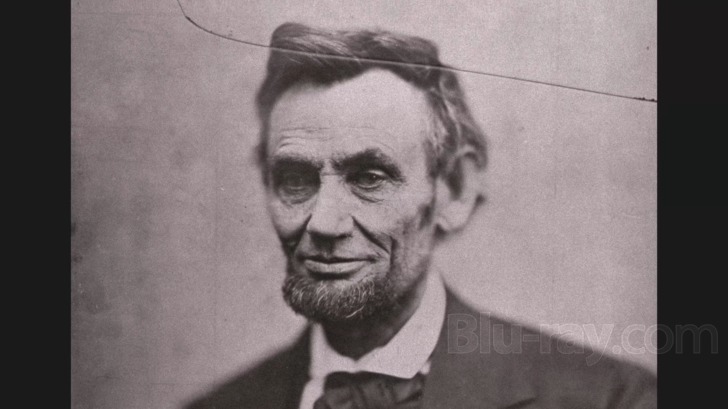
The result of a restoration effort to preserve the series in HD for future educational use, "The Civil War" arrives on Blu-ray with an AVC encoded image (1.43:1 aspect ratio) presentation. Shot on 16mm, the show primarily focuses on photographs, which are expectedly worn but remain a valuable window to the past, with tremendous texture preserved. Detail is also clear and crisp with interview segments, capturing facial detail and fibrous clothing, and location shots, which hold depth to satisfaction. Colors are secure, finding purple skies and outdoor greenery most appealing, and black and white balance is undisturbed. Skintones are natural. Delineation is acceptable, overcoming challenges of age, though some boosting of brightness is present, but not problematic. Grain is managed with care, retaining a filmic appearance. Source is free of damage, but one distinct digital glitch remains, found at 39:24 in the episode "Simply Murder."
The Civil War Blu-ray Movie, Audio Quality 
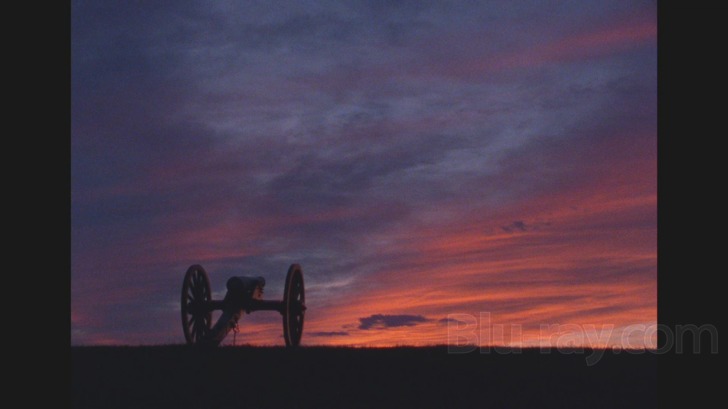
The 5.1 DTS-HD MA sound mix sustains the traditional Ken Burns listening experience without disruption or extremity, keeping to a comfortable and evocative middle as narration takes command. Voices are secure and deep, confidently sharing dramatic readings and information, supported by a strong musical presence, with scoring and soundtrack selections positioned with care, offering ideal instrumentation, slipping into the surrounds with subtlety. Atmospherics are alert to create the feeling of time and place. Combat stories add some low-end heft as warfare is recalled with booming cannons and distant gunfire. No distortion was detected.
The Civil War Blu-ray Movie, Special Features and Extras 
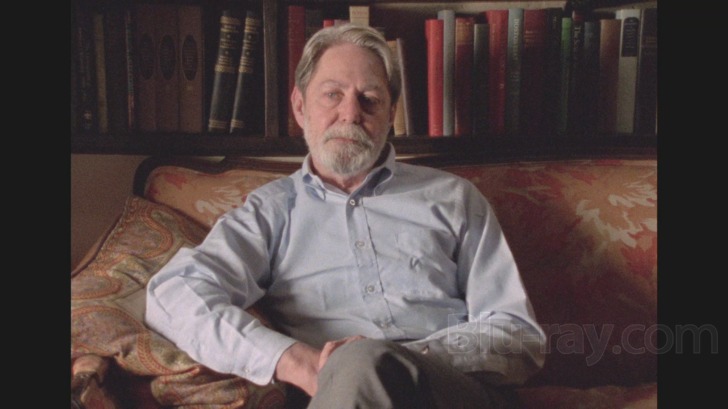
- Booklet (15 pages) contains a letter from Ken Burns, a battle timeline and maps identifying key Civil War events, and a resource page.
- Commentary by Ken Burn is contained to segments "Prologue," "All Night Forever," "Secessionitis," "Traitors & Patriots," "Gun Men," "Manassas," and "Honorable Manhood."
- "Making 'The Civil War': 25 Years Later" (28:20, HD) sits down with director Ken Burns, writers Ric Burns and Geoffrey C. Ward, cinematographers Buddy Squires and Allen Moore, and editor Paul Barnes to discuss the origin of the documentary project -- one with an enormous scope that seemed impossible to conquer. Attention to detail and the challenge of building connective tissue between the episodes are highlighted, along with the colossal undertaking of research. Anecdotes are also shared about location shooting and time spent with author Shelby Foote.
- "Restoring 'The Civil War'" (13:57, HD) returns to the interview participants (joined by Paolo Cherchi Usai, the senior curator at George Eastman House, preservation manager Daniela Curro, restoration producer Daniel J. White, colorist Jack Lewars, and Joe Beirne, chief technical officer at Technicolor-Postworks) to showcase the program's journey to a 4K restoration. Examples are provided to showcase the upgrade in resolution, with technicians bringing out fresh detail and color to help "The Civil War" continue its journey as an evergreen educational program.
- Commentary is provided on the segments "Ironclads," "Shiloh," "The Arts of Death," "Stonewall – The Seven Days," Kiss Daniel for Me," and "Antietam."
- Commentary is provided on the segments "Northern Lights," "The Kingdom of Jones," "Under the Shade of Trees," "Prologue," "Gettysburg: The Second Day," "Gettysburg: The Third Day," and "A New Birth of Freedom."
- Commentary is provided on the segments "Prologue," "Prologue – Lee," "Now, Fix Me," "Summer, 1864," "Can Those Be Real Men," and "Most Hallowed Ground."
- Commentary is provided on the segments "Sherman's March," "Died of a Theory," "Washington, March 4, 1865 – I Want to See Richmond," "Appomattox," "Assassination," and Useless, Useless: The Picklocks of Biographers."
- "Complete Shelby Foote Interviews" are broken up into Part 1 (70:02, HD), Part 2 (109:29, HD), and Part 3 (15:01, HD), collecting unedited thoughts from the star of the documentary, with Burns off-camera feeding him questions.
- Interview (10:09, SD) is a 2002 conversation with Foote, who recounts his introduction to the project, his pride about the show's historical accuracy, and his surge of fame after the series aired in 1990.
- Interview (9:28, SD) with Jay Ungar and Molly Mason discuss the music of "The Civil War," with emphasis on "Ashokan Farewell," which unexpectedly turned into a hit song after the success of the series. They also perform the single live.
- "Remembering 'The Civil War'" (14:36, HD) is brief chat with Burns from 2011, providing an overview of the program's production history, along with its emotional and educational intentions.
- "'The Civil War' in the Classroom" (4:47, HD) displays how the series is used as an educational tool, focusing on teenagers sharing ideas and asking questions about slavery.
The Civil War Blu-ray Movie, Overall Score and Recommendation 
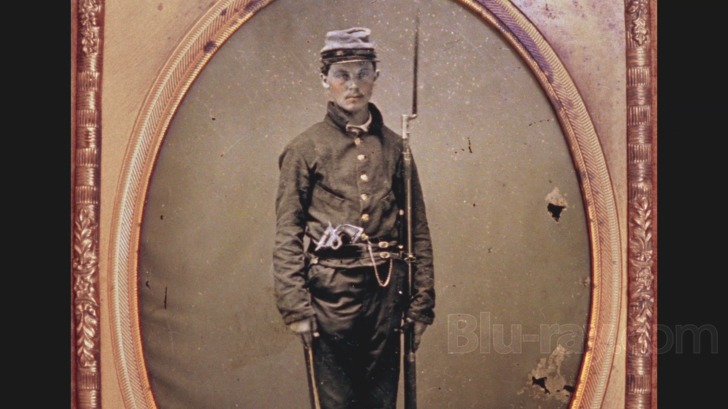
"The Civil War" treks through conflicts and identifies critical battles. The show explores personalities to better understand wartime actions. And Burns is tough to beat when it comes to research and accuracy, clarifying murky details with help from visual evidence. The series is a colossal undertaking, yet it never feels scattered or underdeveloped, carefully filing through the years, picking up all the particulars to provide an understanding of the Civil War. As an educational tool, it's eye-opening. As a documentary, it carries along with uncommon confidence, with Burns establishing his artistic approach and hunger for achievement, redefining what a documentary is capable of. "The Civil War" is a full meal, but it never loses appeal or power as it takes on the herculean task of untangling history.
Other editions
The Civil War: Other Seasons
Similar titles
Similar titles you might also like

The Vietnam War
2017

The War
2007

Gettysburg
2011

They Shall Not Grow Old
2018

The World at War
1973

WWII in HD
World War II in HD
2009

Korengal
2014

Apocalypse: World War II
2010

The World Wars
2014

D-Day: Normandy 1944 4K
75th Anniversary Edition
2014

Ultimate Civil War
150th Anniversary Edition
2012

Vietnam in HD
2011

WWII From Space
2012

Restrepo
2010

Victory at Sea
Deluxe Edition
1952-1953

Up From Slavery
2011

America: The Story of Us
2010

Last Days in Vietnam
American Experience: Last Days in Vietnam
2014

The Cold Blue
2018

The Roosevelts: An Intimate History
2014

